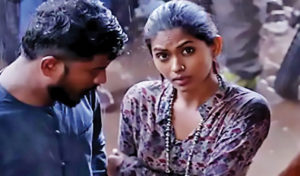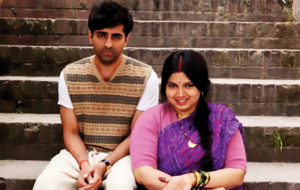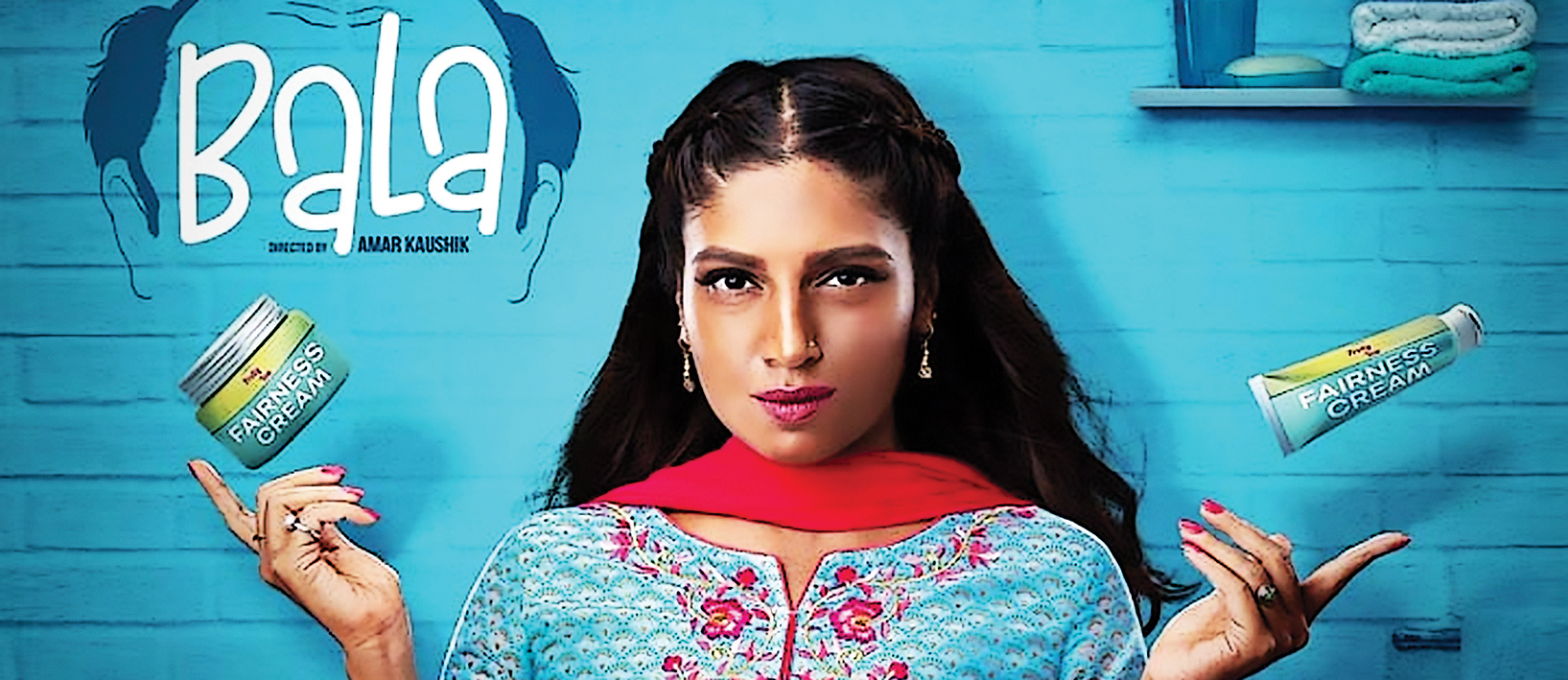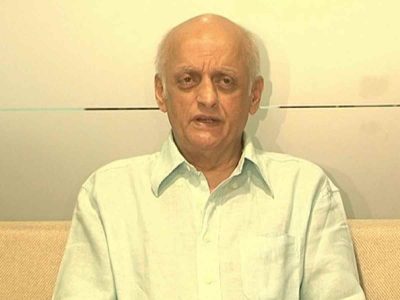Bhumi Pednekar’s skin colour in Bala is an outrage. Why is nobody protesting?
The newly released film Bala, starring Ayushmann Khurrana and Bhumi Pednekar, is problematic. It not only takes the insulting practice of brownfacing in Bollywood to a new level of blackfacing but does so under the guise of denoucing false conceptions of beauty and associated discrimination. In a country of predominantly dark-skinned people, a fair-complexioned actress is blackfaced so she can play a dark-skinned girl!
The film, thus, effectively ends up perpetuating the hegemony of caste and colour.
After watching the movie, I could not decide what was more outrageous: blackfacing an actress or using a blackfaced girl to decry India’s obsession with fair skin. Yet, even as the film does brisk business – raking in Rs 61 crore in the first five days – there’s no palpable outrage over the blackfacing.
The film revolves around the problem of hair loss in Bala, a standup comedian played by Khurrana, and has a dark-skinned lawyer named Lathika Tiwari, played by Pedekar, as a central character. But blackfacing fair-skinned Pednekar into Lathika Tiwari is a cruel joke that only serves to perpetuate the problem the movie seemingly seeks to address.
Asked about casting a fair actress with blackface, the film’s director, Amar Kaushik, told Firstpost, “For me, actor comes first, and then comes how the actor will look in that character. If you limit yourself in the beginning that this actor won’t suit the character then for Ayushmann’s character I should have taken an actor who has a receding hairline? Don’t we have Deepika Padukone playing an acid attack survivor in Chhapaak? These are the actors, and it is their job to get into the skin of a character.”
Kaushik’s argument is premised on two faulty assumptions. One, that there are no dark-skinned talented actresses worth looking at. Two, you can easily appropriate a dark-skinned girl using blackface and speak for her the way you can turn a hairy man into a bald man using a costume.
How can a young director like Kaushik be so ignorant about blackface? Recently, Canada’s prime minister, Justin Trudeau, had to apologise after pictures emerged showing him in blackface during his high school days. In the United States, NBC News anchor Meagan Kelly was made to resign for saying on air that she was fine wearing blackface when she was a child.

Could the director not find any talented dark-skinned actress in India? Or did he think dark-skinned actresses were not talented?
Why not cast someone such as Anjali Patil, who acted so wonderfully in Newton and Kaala, which actually changed the colour paradigm in a real sense, would have been apt for the role of a fierce lawyer. Patil is no novice. She has won praise for her work in Delhi in a Day, Chakravyuh and Newton, winning many accolades, including a National Film Award.
The “actor comes first” premise didn’t hold for Dum Laga Ke Haisha, which too stars Khurrana and Pednekar. When there was a need to cast a plus-size woman, Pednekar, who had never done a film before, was made to put on around 30 kilos. No costume used to make her appear “fat”. They wanted a “real fat woman”. In case of Bala, the actor came second.
Pednekar was blunt when asked about brownfacing in Bala. “These are characters I can’t say no to, I am an actor and I am supposed to do whatever it takes to transform. There is a section of society that might not like it but that doesn’t mean I am going to stop,” she , told Good Times.

Think about it. After a long time, a Hindi film talked about the hypocrisy of fairness products and the mental trauma suffered by a 5-year old dark-skinned girl when she’s called names. Yet, it too came at the expense of having to see a blackface. It’s like hearing a sermon against domestic violence from a known wife-beater who, through exemplary dialogues and hard-hitting examples, even makes some people cry. But if you knew he was part of the problem, you would not laud his speech.
Each time Lathika Tiwari came on screen with her outlandish makeup, it offended me as a dark-skinned man. I am sure it offended many of the dark-complexioned women in the theatre even more.
Bollywood’s history with darkness
Bollywood boasts of superlative talents such as Rekha, Smita Patil, Kajol, Nandita Das, Ajay Devgan, Chitrangadha Singh, Bipasha Basu and Anjali Patil, who range from dusky to dark skinned. More often than not, these actors are made to look much fairer – See Kajol in Dilwale – but when casting a really dark character, Bollywood often prefers to say “blackface it”.

In Rajesh Khanna’s blockbuster movie Sauten, Padmini Kolhapuri’s Dalit father played by Sriram Lagoo was blackfaced. In Izzat, Dharmendra is the son of a tribal woman and his face is darkened. In Raziya Sultan too, Dharmendra in blackface plays Jamal-ud-Din Yaqut. Even Hrithik Roshan was brownfaced in Super 30 because his character, Anand Kumar, hailed from the backward class even though the teacher on whose life the movie is based isn’t dark-skinned.
Bollywood has a multitude of unaddressed problems: lack of diversity in characters and actors (all characters in Bala have Brahmin names), stereotyping certain sections of the society, and brownfacing.
Bala not only continues the structural colorism under the guise of addressing it, it sets an awfully wrong and dangerous precedent in blackfacing female actors. Ignoring this and making blackface characters the new normal would be shameful to say the least.
www.newslaundry.com





